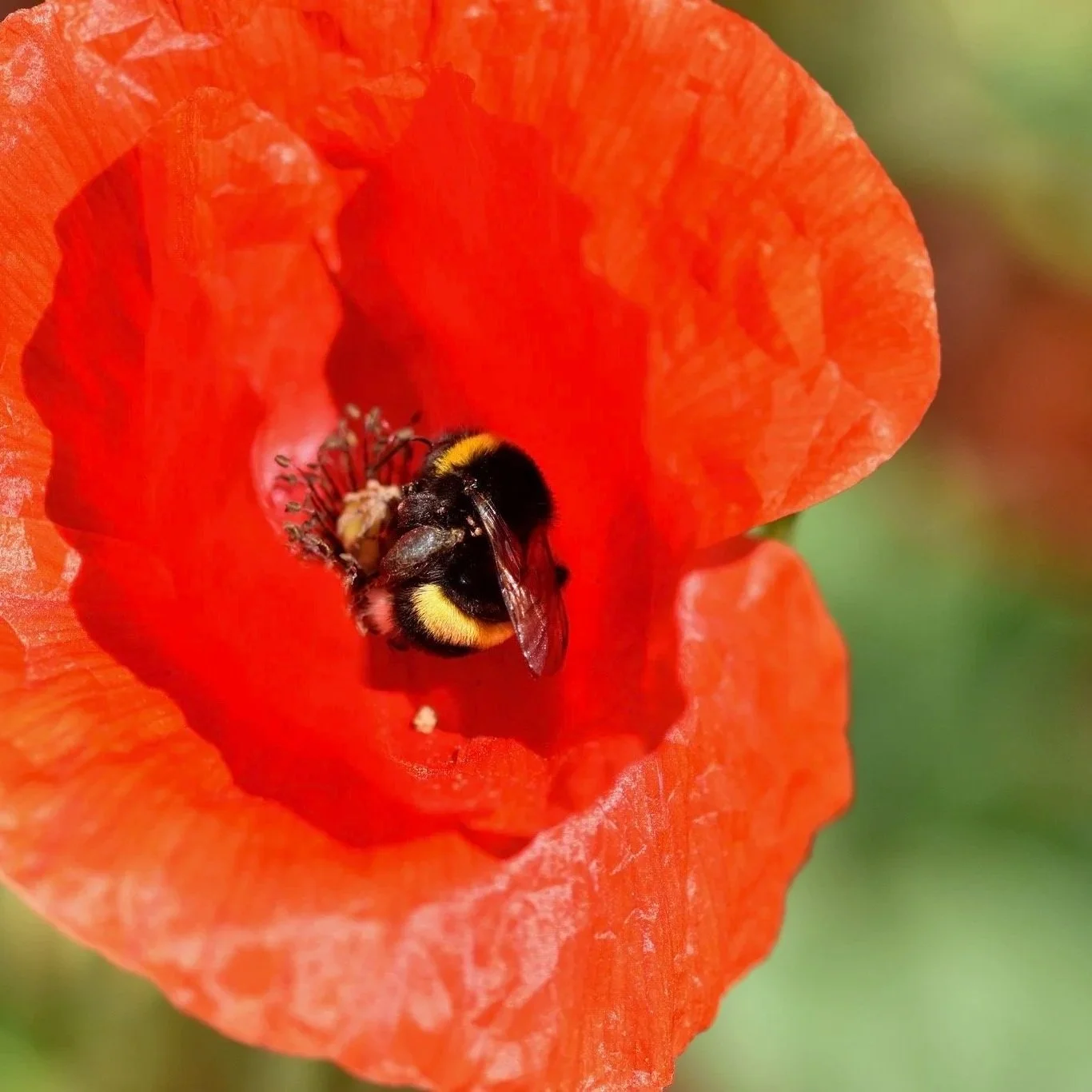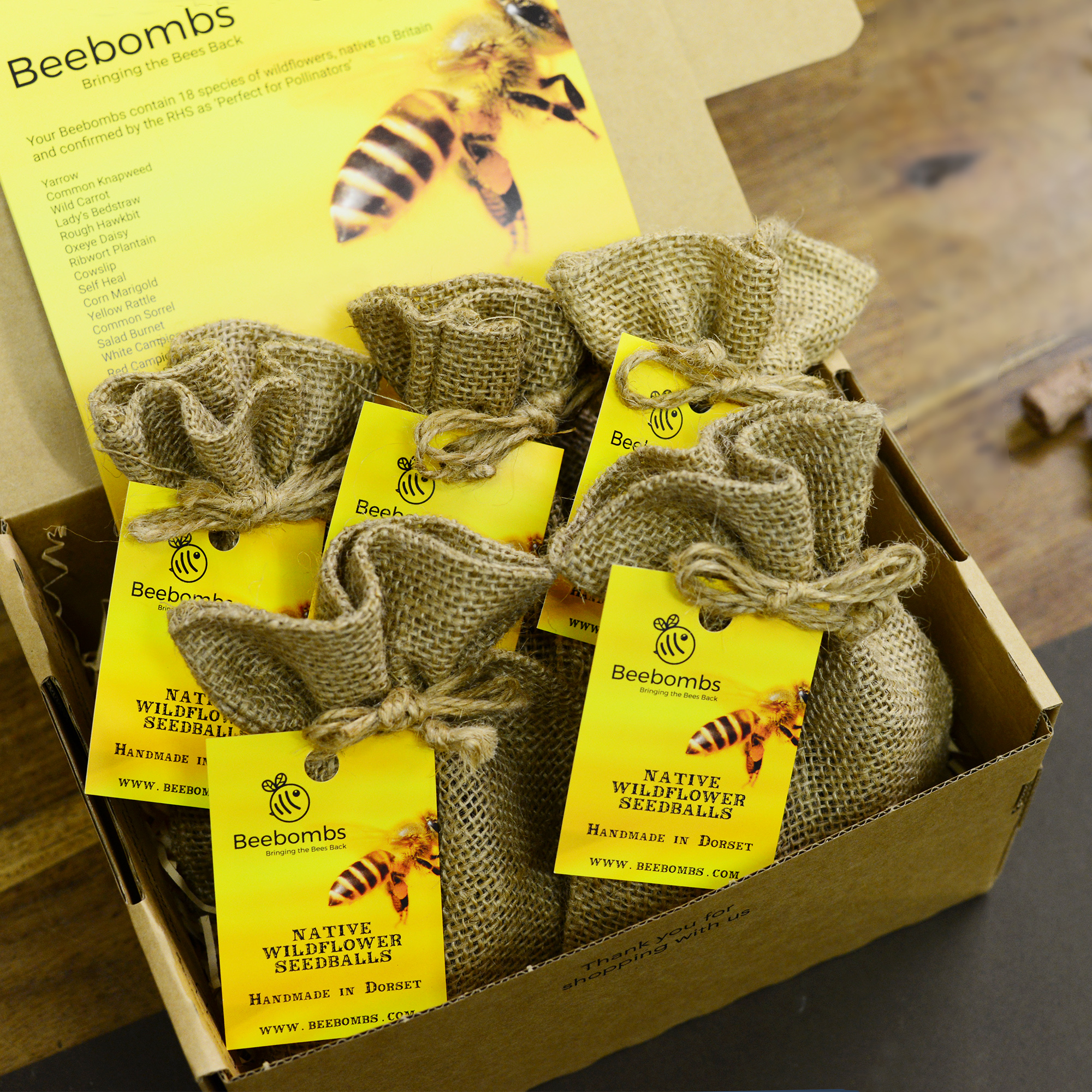Which Flowers Are Best for Attracting Bees?
Why Flower Choice Matters
Not all flowers are equally useful to bees. Many modern garden varieties, especially double-petalled types, produce little nectar or make it hard for pollinators to feed. Native wildflowers, on the other hand, have evolved alongside British bees and provide the accessible food they need.
Bee-Favourite Wildflowers in Beebombs
Here are some of the standout species in Beebombs that bees love:
Cornflower (May–October) – Bright blue and packed with nectar; a magnet for bumblebees.
Common Poppy (June–September) – Its open blooms offer easy access to pollen for many species.
Oxeye Daisy (June–September) – Simple, accessible flowers that attract solitary bees as well as hoverflies.
Common Knapweed (July–September) – Known as one of the best nectar plants for bees and butterflies.
Red Campion (April–August) – Provides food earlier in the season and thrives in semi-shade.
Cowslip (April–May) – Among the earliest flowers, helping bees at a time when little else is available.
Yellow Rattle (May–August) – Its presence reduces grass dominance, making space for other wildflowers to flourish.
Lady’s Bedstraw (June–September) – Sweetly scented yellow flowers rich in nectar.
Together with the other species in the mix, these ensure there’s something in flower for pollinators from early spring right through to autumn.
Planting for a Continuous Buffet
Bees need food throughout the year, not just in summer. The Beebombs mix is designed to cover:
Spring forage: cowslip, red campion.
Summer abundance: cornflower, poppy, oxeye daisy.
Late-season support: knapweed, lady’s bedstraw, and others that bloom into September.
This staggered flowering means bees can rely on your garden for months at a time.
FAQs
Q: Should I add other plants to attract more bees?
Yes, herbs like thyme, rosemary, and mint are also excellent for pollinators, but Beebombs provide a strong foundation of native species.
Q: Are wildflowers better than garden centre plants?
For bees, yes. Native wildflowers are generally more nutritious and easier to feed from.
Q: Will all 18 species flower in my garden?
It depends on your soil and conditions. Some species will thrive more than others, but the mix ensures good coverage overall.
Summary
The best flowers for attracting bees are simple, nectar-rich, and native. With Beebombs, you’re planting a mix of 18 UK wildflower species chosen precisely for their value to pollinators. From cowslip in spring to knapweed in late summer, your garden becomes a vital food source and a haven buzzing with life.
🌼🐝 Scatter Beebombs and give bees the flowers they need, season after season.
TL;DR: Bees are drawn to a wide range of nectar and pollen-rich flowers. The 18 native species in Beebombs include some of the very best for pollinators, ensuring food sources across spring, summer, and autumn.




